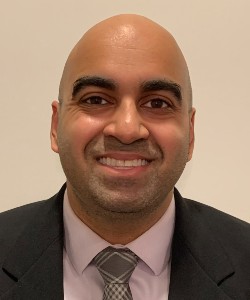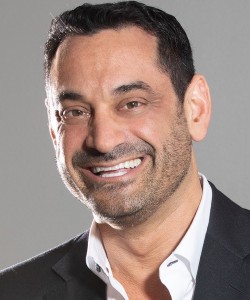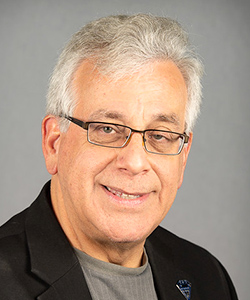Buprenorphine for the Anesthesiologist and Pain Physician
Live Webinar
CME Certificates Educational Webinars
$25 for members; $50 for nonmembers
Overview
Currently few anesthesiologists and pain physicians initiate buprenorphine in patients suffering from opioid use disorder (OUD). Initiating buprenorphine in this period has the potential to save lives. Anesthesiologists and pain physicians frequently encounter patients with comorbid OUD, thus are uniquely positioned to act. Proving an overview of buprenorphine and specific guidance on its use during the perioperative, postoperative, and clinic setting will be valuable in preventing morbidity and mortality related to OUD.
Topics include
- Pharmacological overview
- Buprenorphine in the perioperative setting
- Buprenorphine in the outpatient setting
- Buprenorphine in the treatment of chronic pain
Faculty
Scientific/Education Planning Committee
Lynn Kohan, MD; University of Virginia, Charlottesville, VA
Eugene Viscusi, MD; Thomas Jefferson University, Philadelphia, PA
Faculty
Elizabeth Bentley, PharmD, MSJ, BCPS; Kaiser Permanente, Portland, OR
Lynn Kohan, MD; University of Virginia, Charlottesville, VA
Sudheer Potru, DO; Atlanta
VA Medical Center, Emory University School of Medicine, Atlanta, GA
Michael Sprintz, DO, DFASAM; Sprintz Center for Pain & Recovery, Shenandoah, TX
Eugene Viscusi, MD; Thomas
Jefferson University, Philadelphia, PA

Elizabeth Bentley, MSJ, PharmD, is the director of Clinical Pharmacy Services at Kaiser Permanente − Northwest Region. She is co-chair of the Kaiser Permanente Controlled Substances Stewardship Workgroup. She earned her PharmD at the University of Illinois (Chicago) College of Pharmacy and completed clinical residencies at NorthShore University Health System and at Kaiser Permanente Drug Information Services. Dr. Bentley also holds a master’s degree in journalism (MSJ) from the Medill School of Journalism.
 Lynn Kohan, MD, is an associate professor of anesthesiology and pain medicine at the University of Virginia in Charlottesville.
She obtained her medical degree from Georgetown University, where she also completed her anesthesia residency. She completed her pain medicine fellowship at the University of Virginia and stayed on as faculty. She currently serves as the Pain Management
Fellowship Director. Her research and clinical interests include head and facial pain, novel radiofrequency techniques, medical and interventional treatments for acute and chronic pain, and resident/fellow education.
Lynn Kohan, MD, is an associate professor of anesthesiology and pain medicine at the University of Virginia in Charlottesville.
She obtained her medical degree from Georgetown University, where she also completed her anesthesia residency. She completed her pain medicine fellowship at the University of Virginia and stayed on as faculty. She currently serves as the Pain Management
Fellowship Director. Her research and clinical interests include head and facial pain, novel radiofrequency techniques, medical and interventional treatments for acute and chronic pain, and resident/fellow education. Sudheer Potru, DO,
is an anesthesiologist and interventional pain specialist who will sit for board certification in addiction medicine this fall. The director of the Atlanta VA’s complex pain clinic and an assistant professor at Emory, he has strong interest
in the clinical intersection of pain and addiction and cares for veterans with chronic pain and substance use disorders (SUDs) and those on high-dose opioids requiring tapers. Dr. Potru is the founder and chair of ASRA’s Pain and SUD Special
Interest Group and serves on the ASA/ASRA/AAPM/ASAM Substance Use Disorder Workgroup as well.
Sudheer Potru, DO,
is an anesthesiologist and interventional pain specialist who will sit for board certification in addiction medicine this fall. The director of the Atlanta VA’s complex pain clinic and an assistant professor at Emory, he has strong interest
in the clinical intersection of pain and addiction and cares for veterans with chronic pain and substance use disorders (SUDs) and those on high-dose opioids requiring tapers. Dr. Potru is the founder and chair of ASRA’s Pain and SUD Special
Interest Group and serves on the ASA/ASRA/AAPM/ASAM Substance Use Disorder Workgroup as well.
 Eugene Viscusi, MD, is a professor of anesthesiology and the director of acute pain management in the department of anesthesiology at
Thomas Jefferson University in Philadelphia, PA. He received his medical degree from Jefferson Medical College and completed an anesthesiology residency at the University of Pennsylvania in Philadelphia. Dr. Viscusi developed a novel, nurse-driven
model for acute pain management with specially trained nurses in the early 1990s that has served as a model for healthcare delivery. Dr. Viscusi has lectured extensively and contributed more than 75 peer-reviewed articles in journals including JAMA, Anesthesiology, Anesthesia & Analgesia, and Regional Anesthesia and Pain Medicine. He
currently serves on the editorial board of Regional Anesthesia and Pain Medicine, Clinical Journal of Pain, and American Journal of Orthopedics. Dr. Viscusi has served on the ASRA board of directors since 2011, currently
serving as president. Dr. Viscusi is also an avid musician and specialist in early music, and he performed and conducted in the Philadelphia area until the late 1990s.
Eugene Viscusi, MD, is a professor of anesthesiology and the director of acute pain management in the department of anesthesiology at
Thomas Jefferson University in Philadelphia, PA. He received his medical degree from Jefferson Medical College and completed an anesthesiology residency at the University of Pennsylvania in Philadelphia. Dr. Viscusi developed a novel, nurse-driven
model for acute pain management with specially trained nurses in the early 1990s that has served as a model for healthcare delivery. Dr. Viscusi has lectured extensively and contributed more than 75 peer-reviewed articles in journals including JAMA, Anesthesiology, Anesthesia & Analgesia, and Regional Anesthesia and Pain Medicine. He
currently serves on the editorial board of Regional Anesthesia and Pain Medicine, Clinical Journal of Pain, and American Journal of Orthopedics. Dr. Viscusi has served on the ASRA board of directors since 2011, currently
serving as president. Dr. Viscusi is also an avid musician and specialist in early music, and he performed and conducted in the Philadelphia area until the late 1990s.
CME-CPD
Educational objectives
After participating in this educational activity, participants should be able to:
- Recognize the benefits of continuing buprenorphine in the perioperative setting.
- Demonstrate how to convert patients to buprenorphine in the postoperative setting.
- Describe how and when to initiate buprenorphine in the out-patient setting as a bridge to opioid cessation and/or addiction treatment.
- Identify the unique safety qualities of buprenorphine in the treatment of chronic pain with and without opioid use disorder.
- Demonstrate knowledge of when an x-waiver is or is not needed to prescribe buprenorphine.
Target audience
The educational activity is designed for physicians wanting to gain knowledge in the use of buprenorphine in the perioperative setting, treatment of acute and chronic pain, and its use as a bridge to opioid cessation and/or opioid treatment.
Accreditation and credit designation statements
Credits by Day | Maximum |
August 26, 2020 | 1.25 |
Total Credits: | 1.25 |
Physicians
The American Society of Regional Anesthesia and Pain Medicine is accredited by the Accreditation Council for Continuing Medical Education (ACCME) to provide continuing medical education for physicians.
The American Society of Regional Anesthesia and Pain Medicine designates this internet activity enduring material for a maximum of 1.25 AMA PRA Category 1 Credits™. Physicians should claim only the credit commensurate with the extent of their participation in the activity.
PAs (Physicians Assistants): AAPA accepts certificates of participation for educational activities certified for AMA PRA Category 1 Credit™ from organizations accredited by ACCME or a recognized state medical society. Physician assistants may receive a maximum of 1.25 hours of Category 1 credit for completing this program.
Nurse Practitioners: The American Association of Nurse Practitioners (AANP) accepts AMA PRA Category 1 Credits™ from organizations accredited by the ACCME. This activity has been approved for a maximum of 1.25 AMA PRA Category 1 Credits.TM
Registered Nurses: Regulations dictate that only physicians may earn CME credits, however, many state Boards of Registered Nursing accept AMA PRA Category 1 Credits™ from organizations accredited by the ACCME. Attendees are responsible for confirming their specific board’s acceptance of ASRA-provided credits. This activity has been approved for a maximum of 1.25 AMA PRA Category 1 Credits.TM
The American Board of Anesthesiology® MOCA®1
This activity contributes to the CME requirements for Part II: Lifelong Learning and Self-Assessment of the American Board of Anesthesiology’s (ABA) redesigned Maintenance of Certification in Anesthesiology Program® (MOCA®), known as MOCA 2.0.TM Please consult the ABA website, www.theABA.org, for a list of all MOCA 2.0 requirements. Maintenance of Certification in Anesthesiology Program® and MOCA® are registered certification marks of The American Board of Anesthesiology.®
ASRA is an ABA-approved provider and, as a service to ASRA members and participants, CME credits are reported to the ABA. Participants must include their correctly formatted ABA ID number (34567890) during the online evaluation and credit claim process available at the conclusion of the activity. Once the online evaluation and credit claim process is closed, certificates will be issued and credits reported to the ABA. After this time, participants may request their CME certificate by contacting asrameetings@asra.com, but ASRA will no longer report credits to the ABA, which will then be the individual participant’s responsibility.
International credits
Royal College of Physicians and Surgeons of Canada: The Royal College of Physicians and Surgeons of Canada has agreements based on the mutual recognition of credit points with the American Medical Association for live and web-based (synchronous or asynchronous) educational events. You may submit your CME certificate directly for credit recognition of this accredited group learning activity (Section 1) as defined by the Maintenance of Certification program of The Royal College of Physicians and Surgeons of Canada. For more information, visit: www.royalcollege.ca
European Accreditation Council for Continuing Medical Education (UEMS-EACCME): The UEMS-EACCME has agreements based on the mutual recognition of credit points with the American Medical Association for live and e-learning educational events. Each medical specialist should claim only those hours of credit that he/she actually spent in the educational activity. The EACCME is an institution of the European Union of Medical Specialists (UEMS): www.uems.net
Commercial support disclosure
No industry support has been received for this educational activity.
Disclosure and resolution of personal conflicts of interest
Click here to view all faculty disclosures. In accordance with the ACCME’s Standards for Commercial Support and related policies, ASRA is committed to ensuring balance, independence, objectivity, and scientific rigor in its CME/CPD activities. Those in control of the educational content disclose all relevant relationships (financial or other) with any commercial interest that they or their spouse/partner have had within the past 12 months. If an individual refuses to disclose, they are disqualified from participating. Disclosure information is evaluated and conflicts of interest resolved. Disclosure is made to participants prior to the activity. Participants are asked to evaluate the objectivity and independence. Off-label or investigational use of a therapeutic product is also disclosed.
1Maintenance of Certification in Anesthesiology™ program and MOCA® are registered trademarks of The American Board of AnesthesiologyTM
Buprenorphine for the Anesthesiologist and Pain Physician
Live Webinar
CME Certificates Educational Webinars
$25 for members; $50 for nonmembers
Overview
Currently few anesthesiologists and pain physicians initiate buprenorphine in patients suffering from opioid use disorder (OUD). Initiating buprenorphine in this period has the potential to save lives. Anesthesiologists and pain physicians frequently encounter patients with comorbid OUD, thus are uniquely positioned to act. Proving an overview of buprenorphine and specific guidance on its use during the perioperative, postoperative, and clinic setting will be valuable in preventing morbidity and mortality related to OUD.
Topics include
- Pharmacological overview
- Buprenorphine in the perioperative setting
- Buprenorphine in the outpatient setting
- Buprenorphine in the treatment of chronic pain
Faculty
Scientific/Education Planning Committee
Lynn Kohan, MD; University of Virginia, Charlottesville, VA
Eugene Viscusi, MD; Thomas Jefferson University, Philadelphia, PA
Faculty
Elizabeth Bentley, PharmD, MSJ, BCPS; Kaiser Permanente, Portland, OR
Lynn Kohan, MD; University of Virginia, Charlottesville, VA
Sudheer Potru, DO; Atlanta
VA Medical Center, Emory University School of Medicine, Atlanta, GA
Michael Sprintz, DO, DFASAM; Sprintz Center for Pain & Recovery, Shenandoah, TX
Eugene Viscusi, MD; Thomas
Jefferson University, Philadelphia, PA

Elizabeth Bentley, MSJ, PharmD, is the director of Clinical Pharmacy Services at Kaiser Permanente − Northwest Region. She is co-chair of the Kaiser Permanente Controlled Substances Stewardship Workgroup. She earned her PharmD at the University of Illinois (Chicago) College of Pharmacy and completed clinical residencies at NorthShore University Health System and at Kaiser Permanente Drug Information Services. Dr. Bentley also holds a master’s degree in journalism (MSJ) from the Medill School of Journalism.
 Lynn Kohan, MD, is an associate professor of anesthesiology and pain medicine at the University of Virginia in Charlottesville.
She obtained her medical degree from Georgetown University, where she also completed her anesthesia residency. She completed her pain medicine fellowship at the University of Virginia and stayed on as faculty. She currently serves as the Pain Management
Fellowship Director. Her research and clinical interests include head and facial pain, novel radiofrequency techniques, medical and interventional treatments for acute and chronic pain, and resident/fellow education.
Lynn Kohan, MD, is an associate professor of anesthesiology and pain medicine at the University of Virginia in Charlottesville.
She obtained her medical degree from Georgetown University, where she also completed her anesthesia residency. She completed her pain medicine fellowship at the University of Virginia and stayed on as faculty. She currently serves as the Pain Management
Fellowship Director. Her research and clinical interests include head and facial pain, novel radiofrequency techniques, medical and interventional treatments for acute and chronic pain, and resident/fellow education. Sudheer Potru, DO,
is an anesthesiologist and interventional pain specialist who will sit for board certification in addiction medicine this fall. The director of the Atlanta VA’s complex pain clinic and an assistant professor at Emory, he has strong interest
in the clinical intersection of pain and addiction and cares for veterans with chronic pain and substance use disorders (SUDs) and those on high-dose opioids requiring tapers. Dr. Potru is the founder and chair of ASRA’s Pain and SUD Special
Interest Group and serves on the ASA/ASRA/AAPM/ASAM Substance Use Disorder Workgroup as well.
Sudheer Potru, DO,
is an anesthesiologist and interventional pain specialist who will sit for board certification in addiction medicine this fall. The director of the Atlanta VA’s complex pain clinic and an assistant professor at Emory, he has strong interest
in the clinical intersection of pain and addiction and cares for veterans with chronic pain and substance use disorders (SUDs) and those on high-dose opioids requiring tapers. Dr. Potru is the founder and chair of ASRA’s Pain and SUD Special
Interest Group and serves on the ASA/ASRA/AAPM/ASAM Substance Use Disorder Workgroup as well.
 Eugene Viscusi, MD, is a professor of anesthesiology and the director of acute pain management in the department of anesthesiology at
Thomas Jefferson University in Philadelphia, PA. He received his medical degree from Jefferson Medical College and completed an anesthesiology residency at the University of Pennsylvania in Philadelphia. Dr. Viscusi developed a novel, nurse-driven
model for acute pain management with specially trained nurses in the early 1990s that has served as a model for healthcare delivery. Dr. Viscusi has lectured extensively and contributed more than 75 peer-reviewed articles in journals including JAMA, Anesthesiology, Anesthesia & Analgesia, and Regional Anesthesia and Pain Medicine. He
currently serves on the editorial board of Regional Anesthesia and Pain Medicine, Clinical Journal of Pain, and American Journal of Orthopedics. Dr. Viscusi has served on the ASRA board of directors since 2011, currently
serving as president. Dr. Viscusi is also an avid musician and specialist in early music, and he performed and conducted in the Philadelphia area until the late 1990s.
Eugene Viscusi, MD, is a professor of anesthesiology and the director of acute pain management in the department of anesthesiology at
Thomas Jefferson University in Philadelphia, PA. He received his medical degree from Jefferson Medical College and completed an anesthesiology residency at the University of Pennsylvania in Philadelphia. Dr. Viscusi developed a novel, nurse-driven
model for acute pain management with specially trained nurses in the early 1990s that has served as a model for healthcare delivery. Dr. Viscusi has lectured extensively and contributed more than 75 peer-reviewed articles in journals including JAMA, Anesthesiology, Anesthesia & Analgesia, and Regional Anesthesia and Pain Medicine. He
currently serves on the editorial board of Regional Anesthesia and Pain Medicine, Clinical Journal of Pain, and American Journal of Orthopedics. Dr. Viscusi has served on the ASRA board of directors since 2011, currently
serving as president. Dr. Viscusi is also an avid musician and specialist in early music, and he performed and conducted in the Philadelphia area until the late 1990s.
CME-CPD
Educational objectives
After participating in this educational activity, participants should be able to:
- Recognize the benefits of continuing buprenorphine in the perioperative setting.
- Demonstrate how to convert patients to buprenorphine in the postoperative setting.
- Describe how and when to initiate buprenorphine in the out-patient setting as a bridge to opioid cessation and/or addiction treatment.
- Identify the unique safety qualities of buprenorphine in the treatment of chronic pain with and without opioid use disorder.
- Demonstrate knowledge of when an x-waiver is or is not needed to prescribe buprenorphine.
Target audience
The educational activity is designed for physicians wanting to gain knowledge in the use of buprenorphine in the perioperative setting, treatment of acute and chronic pain, and its use as a bridge to opioid cessation and/or opioid treatment.
Accreditation and credit designation statements
Credits by Day | Maximum |
August 26, 2020 | 1.25 |
Total Credits: | 1.25 |
Physicians
The American Society of Regional Anesthesia and Pain Medicine is accredited by the Accreditation Council for Continuing Medical Education (ACCME) to provide continuing medical education for physicians.
The American Society of Regional Anesthesia and Pain Medicine designates this internet activity enduring material for a maximum of 1.25 AMA PRA Category 1 Credits™. Physicians should claim only the credit commensurate with the extent of their participation in the activity.
PAs (Physicians Assistants): AAPA accepts certificates of participation for educational activities certified for AMA PRA Category 1 Credit™ from organizations accredited by ACCME or a recognized state medical society. Physician assistants may receive a maximum of 1.25 hours of Category 1 credit for completing this program.
Nurse Practitioners: The American Association of Nurse Practitioners (AANP) accepts AMA PRA Category 1 Credits™ from organizations accredited by the ACCME. This activity has been approved for a maximum of 1.25 AMA PRA Category 1 Credits.TM
Registered Nurses: Regulations dictate that only physicians may earn CME credits, however, many state Boards of Registered Nursing accept AMA PRA Category 1 Credits™ from organizations accredited by the ACCME. Attendees are responsible for confirming their specific board’s acceptance of ASRA-provided credits. This activity has been approved for a maximum of 1.25 AMA PRA Category 1 Credits.TM
The American Board of Anesthesiology® MOCA®1
This activity contributes to the CME requirements for Part II: Lifelong Learning and Self-Assessment of the American Board of Anesthesiology’s (ABA) redesigned Maintenance of Certification in Anesthesiology Program® (MOCA®), known as MOCA 2.0.TM Please consult the ABA website, www.theABA.org, for a list of all MOCA 2.0 requirements. Maintenance of Certification in Anesthesiology Program® and MOCA® are registered certification marks of The American Board of Anesthesiology.®
ASRA is an ABA-approved provider and, as a service to ASRA members and participants, CME credits are reported to the ABA. Participants must include their correctly formatted ABA ID number (34567890) during the online evaluation and credit claim process available at the conclusion of the activity. Once the online evaluation and credit claim process is closed, certificates will be issued and credits reported to the ABA. After this time, participants may request their CME certificate by contacting asrameetings@asra.com, but ASRA will no longer report credits to the ABA, which will then be the individual participant’s responsibility.
International credits
Royal College of Physicians and Surgeons of Canada: The Royal College of Physicians and Surgeons of Canada has agreements based on the mutual recognition of credit points with the American Medical Association for live and web-based (synchronous or asynchronous) educational events. You may submit your CME certificate directly for credit recognition of this accredited group learning activity (Section 1) as defined by the Maintenance of Certification program of The Royal College of Physicians and Surgeons of Canada. For more information, visit: www.royalcollege.ca
European Accreditation Council for Continuing Medical Education (UEMS-EACCME): The UEMS-EACCME has agreements based on the mutual recognition of credit points with the American Medical Association for live and e-learning educational events. Each medical specialist should claim only those hours of credit that he/she actually spent in the educational activity. The EACCME is an institution of the European Union of Medical Specialists (UEMS): www.uems.net
Commercial support disclosure
No industry support has been received for this educational activity.
Disclosure and resolution of personal conflicts of interest
Click here to view all faculty disclosures. In accordance with the ACCME’s Standards for Commercial Support and related policies, ASRA is committed to ensuring balance, independence, objectivity, and scientific rigor in its CME/CPD activities. Those in control of the educational content disclose all relevant relationships (financial or other) with any commercial interest that they or their spouse/partner have had within the past 12 months. If an individual refuses to disclose, they are disqualified from participating. Disclosure information is evaluated and conflicts of interest resolved. Disclosure is made to participants prior to the activity. Participants are asked to evaluate the objectivity and independence. Off-label or investigational use of a therapeutic product is also disclosed.
1Maintenance of Certification in Anesthesiology™ program and MOCA® are registered trademarks of The American Board of AnesthesiologyTM